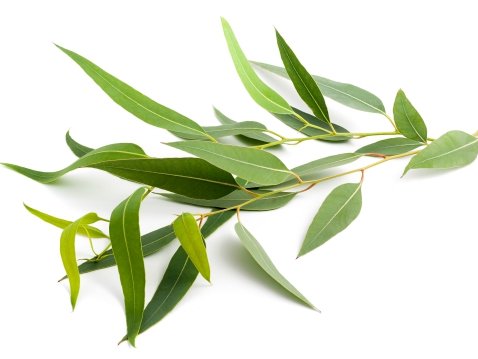Phytogenic ingredients in the spotlight: Eucalyptus - not only the favorite plant of the koalas (part 6)
After we have already told you about the antimicrobial and antioxidative effects in the 5th part of our Eucalyptus series, today we would like to dedicate ourselves to the anti-inflammatory and the antiviral modes of actions...

Anti-inflammatory effects
As already mentioned, active molecules, like eucalyptol (1,8‐cineol), the main component in the essential oils of eucalyptus leaves, are also known to possess anti‐inflammatory properties (Yin et al. 2019, Rehman et al., 2013, Mustafa et al.), we also like to take a closer look at this mode of action.
Inflammation...

...is described as complex biological response of vascular tissue against pathogens, irritants or damaged cells. It is a protective measure of the organism to defeat the harmful stimuli. In the therapeutic treatment of diseases, anti-inflammatory substances can be an effective gadget, and as such, have been used for centuries in human history. Medicinal plants, respectively isolated compounds thereof (i.e. monoterpenes), are used all over the world in folk medicine to treat inflammatory issues (De Cássia da Silveira e Sá 2013).
Nitric oxide (NO), synthesized from L-arginine in many mammalian cells and tissues, has diverse physiological functions and is known for its considerable role in the pathogenesis of inflammatory conditions. As NO production increases during inflammation, it may become cytotoxic when synthesized by activated inflammatory cells in large quantities (10-9 M). Moreover, it carries a certain risk potential with regard to oxidative damage, due to its high reactivity with oxygen to produce peroxynitrite and thus, being potentially harmful towards cellular targets (Moilanen et al., 1999; Vigo et al., 2004).

This explains why in vitro findings on E. globulus extracts being able to reduce nitric oxide levels through scavenging activities and/or by inhibiting the inducible nitric oxide synthase mRNA expression, suggest certain plant extracts to have the potential for their use in the treatment of inflammatory respiratory pathologies and being in line with their traditional medicinal use (Vigo et al., 2004).
In a study of Yin et al. (2019), these anti-inflammatory effects were confirmed in vivo in mice, where eucalyptol mitigated monosodium urate- induced pain and inflammation in ankle tissues through reduction of oxidative stress.
Antiviral characteristics

Eucalyptus oils do not only show toxic activity against a variety of bacteria and fungi, but also has antiviral properties. Again, it is the E. globulus that shows the potential to reduce viral infectivity against e.g. herpes simplex virus (HSV) type-1 in vitro by suppressing the replication ability of the HSV (Raho, 2017). Similar results were obtained in a study from Astani et al. (2010), where several essential oils, including eucalyptus, were tested in vitro and were able to inhibit HSV as well. But eucalyptus oil is not only active in HSV, it also demonstrated its effectiveness against adenovirus, mumps virus, hepatitis C and the Epstein Barr virus, the pathogen of the infectious mononucleosis (Pfeiffer glandular fever) (Cermelli et al., 2008; Davood et al., 2012; Versiati et al. 2014; Takasaki 1990).
An in vivo study of Li (2016) evaluated the effect of 1,8-cineol on mice infected with the influenza A virus and reported that 1,8 Cineol showed protective properties against the influenza viral infection. The level of interleukins (IL-4, IL-5, IL-10,) and monocyte chemotactic protein-1 (MCP-1) in nasal lavage fluids decreased due to 1,8 cineol, and so it was with the level of IL-1β, IL-6, TNF-α, and IFN-γ in lung tissues of the influenza infected mice. Moreover, also the expression of NF-kB p65, intercellular adhesion molecule (ICAM)-1, and vascular cell adhesion molecule (VCAM)-1 in lung tissues were reduced, leading to the assumption that 1,8 Cineol has the potential to improve protection against IFV infection by reducing pulmonary inflammatory responses (Li, 2016).
Additional Info
Interleukins (IL) are a group of messenger substances (cytokines), secreted by the body's own defense cells (leukocytes and macrophages) and serve to regulate the immune system.
Chemokines, like Monocyte chemotactic protein-1 (MCP-1), are chemotactic cytokines, which attract immune cells from the bloodstream into inflamed tissue. MCP-1, for example, attracts monocytes and causes them to accumulate at the site of inflammation.
The tumor necrosis factor alpha (TNF-α) is a multifunctional signal substance of the immune system, which is involved in inflammatory processes. Its main function is to regulate the activity of various immune cells. Interferon-gamma (IFN-γ) is a glycoprotein, also belonging to the class of cytokines and is characterized by its immunostimulating, mainly antiviral and antitumoral effect. Nuclear factor 'kappa-light-chain-enhancer' of activated B-cells (NF-κB) is a specific transcription factor that is of great importance in the regulation of the immune response and is considered critical for the development of inflammation. Intercellular adhesion molecule-1 (ICAM-1) and vascular cell adhesion molecule-1 (VCAM-1) are proteins of the super immunoglobulin family.
As every year, Influenza A viruses cause pandemic outbreaks and infections of the respiratory tract both in humans and animals, unfortunately resulting in high mortality and morbidity, it is very important to counteract. Not least since the emergence of drug-resistant variants has already become a global health concern. Thus, modulating the host proinflammatory response could be a supporting therapeutic strategy, with the different eucalyptus constituents to reveal the secrets that go far beyond the traditional uses.
References upon request.

Elisabeth Rohrer
After her study in agriculture sciences at the university of natural resources and life sciences in Vienna, Elisabeth joined the Delacon team in December 2013 as Technical Communications Manager - a position, she always exerted with pleasure. Since 2021, her task areas have been extended and thus, she is also supporting colleagues in writing offside the technical focus as Content Manager. Elisabeth describes herself as a great animal and nature lover and prefers to spend her free time high up in the mountains with her little family, away from the hustle and bustle.










